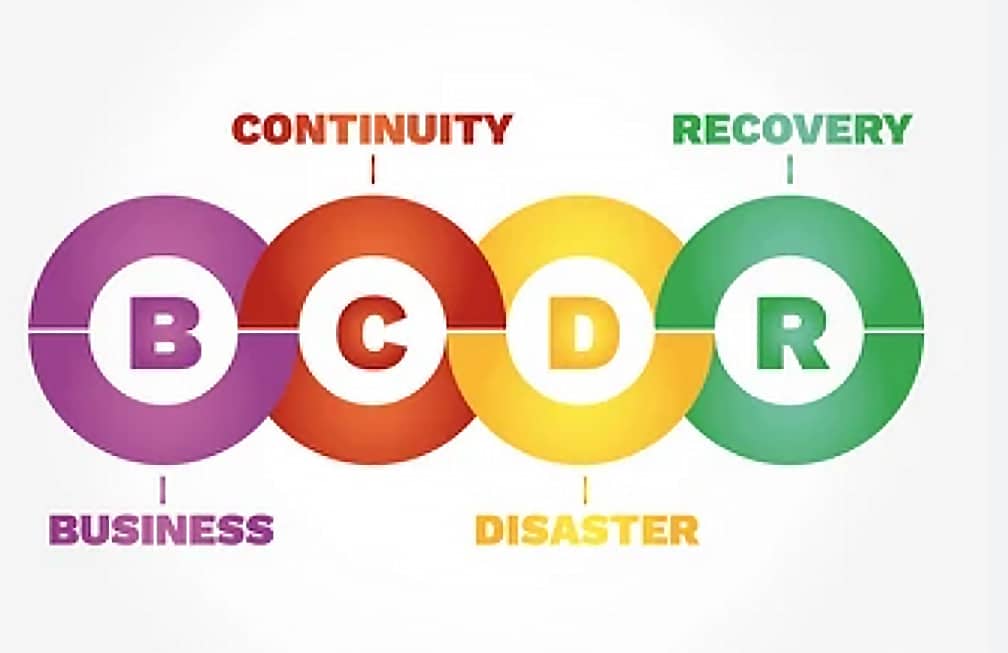Preparing for disaster is essential for organizations to function properly. When a business gets interrupted, it could be catastrophic. There can be several detrimental effects to an organization’s sustainability should an interruption occur. Enterprises may incur significant losses to sensitive data, revenue, reputation, and consumer trust. The longer an organization remains hampered by impaired functionality, the greater the consequences will be. In some instances, it could mean cutting personnel or services to balance the overwhelming expense of restoring the normal operating functions of the organization. Developing business continuity and disaster plans can significantly reduce downtime, making the difference between a thriving organization and one that reaches the point of no return.
Defining Business Continuity vs Disaster Recovery
Business continuity is a systematic approach that allows an organization to maintain operational functionality in the event of a crisis. The process focuses on continuous improvements for internal and external operations. Business continuity’s main objective is to preserve an enterprise’s overall functionality. For business continuity to be effective, strategies must be created and implemented should resources such as equipment, third-party vendors, IT services, workforce, workplace, and data become unavailable at any given time. For instance, business continuity may provide a contingency plan that outlines how an organization will continue to function if the workplace encounters a natural disaster, such as a flood. It may offer a suitable alternate workplace location. Business continuity looks to shore up small interruptions or disasters and return organizations to full functionality as swiftly and effectively as possible.
Disaster recovery is a subset of an organization’s business continuity plan. The main focus of disaster recovery is the enterprise’s IT systems and operations. It manages restoring backup systems and implements IT contingency plans to protect an organization’s critical functions and applications. Disaster recovery aims to regain access to critical IT infrastructure and operations, such as data, software, hardware, networking equipment, connectivity, and power. Should a catastrophic event occur, such as cybercrime, a natural disaster, or power loss, disaster recovery activates methods to return an organization to normal operation as fast as possible.
What are the Similarities Between Business Continuity and Disaster Recovery?
Even though business continuity and disaster recovery are two different concepts that go about the business of operational recovery in different ways, there are also some important areas where they overlap. When deployed together, they function as a powerhouse recovery system. Here are three key similarities:
Proactive Strategies
Business continuity and disaster recovery are offensive-minded strategies. They don’t wait for disaster to strike before they respond. Both disciplines proactively work to minimize possible effects before they can happen, helping organizations prepare for potential operational interruptions.
Global Support
Utilizing business continuity and disaster recovery in tandem can help mitigate human-made or ecological disasters. The proactive approach of both methodologies can play a vital role in preparing for natural disasters, pandemics, and cyberattacks. For instance, a breakdown in a vaccine supply chain could have countless disastrous effects, such as loss of life, if operations are not restored quickly.
Regular Check-Ups
While business continuity and disaster recovery are wonderful approaches that every organization should utilize, they need to keep pace with organizational changes. Once the plans are created, the job isn’t finished. Both require regular reviews and updates to ensure they will still be suitable for the potential interruptions that may occur. For instance, if an enterprise moves to a new location, the alternate backup location may be obsolete. If an organization migrates to the cloud, the disaster recovery contingencies need to reflect that.
What is the Difference Between Business Continuity and Disaster Recovery?
While business continuity and disaster recovery share the same overall objective of restoring overall functionality to an enterprise, some key differences underscore the need for two separate plans:
Operational vs Restoration
Business continuity’s chief concern is keeping an organization operational during a crisis. Even if circumstances are unideal, business still needs to be able to happen. As the adage says, “The show must go on.” Disaster recovery is busy behind the scenes, focusing on restoring data access and IT infrastructure to normal operations as quickly as possible.
Safety Measures
While business continuity may account for workplace contingency measures, disaster recovery goes further by creating employee safety measures, such as running fire drills or adding emergency supplies. Both business continuity and disaster recovery plans can be combined to ensure employees are safe while operations maintain functionality.
Different Goals
Business continuity plans work to limit an organization’s downtime. Disaster recovery plans work to minimize IT infrastructure disruptions. Since they are both connected to the overall function of an enterprise, it’s wise to combine business continuity with disaster recovery to ensure the best preparation for a potential crisis.
Inclusion
Business continuity plans encompass various contingencies for an organization’s functionality. Disaster recovery is just one area underneath the business continuity plan umbrella. It’s possible to have a business continuity plan that does not include disaster recovery.
However, disaster recovery plans are necessary for enterprises that rely on IT systems, whether on-premises or in the cloud.
Whether a natural disaster, a cyber threat, a hardware failure, or something else, disaster recovery solutions are the next best thing to being able to predict the future. With over forty-two years of experience, Cynergy Technology is a leading provider of cloud computing solutions.
We recognize the value and significance of maintaining the integrity of an organization’s data and IT infrastructure. As a managed service provider, we can help safeguard your business. Contact us for a free consultation to learn how Cynergy Technology can provide your organization with the right disaster recovery solution.








